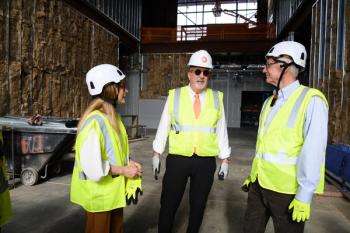
Need to lay off a veterinary associate? Read this first
The answer to shrinking profits isn't always to shrink your veterinary practice.
The economic growth seen in veterinary practices from 1990 to 2007 has disappeared in many areas of the country—and it hurts! In those years, practice owners built, remodeled and expanded to meet their growth needs. They hired associates and technical staff and trained and trained some more.
However, in those busy times, their outpatient appointments numbered 15 to 18 per veterinarian per day. In most small animal practices, this has shrunk to just 10 to 11 per veterinarian. The three-doctor practice that saw 50 patients a day is often lucky to see 30 now.
In your multidoctor practice, I imagine that your associates are like family to you now. You cannot imagine letting any of them go. Technicians and receptionists have been reduced in number by not replacing them as they left for one reason or another, and doctors are doing many tasks performed by technicians just a few years ago.
From a business viewpoint, you know you should not renew the contract of at least one of your associates. But which one? Each has been with you for 10 or more years, each owns a home nearby, and between them they have a half-dozen kids in the local schools. They are active in your community and great assets to the practice. Eliminating any of their jobs would seem heartless at this time.
But maintaining these underutilized associates' salaries has hurt your net profit. The result is that your owner salary has dwindled proportionately more than any other member of the staff. This cannot go on without the word "bankruptcy" popping up in your vocabulary. Before you lay off one of your doctors, consider this solution: a satellite clinic.
I know from experience that within a 10- or 15-minute drive of your practice, there's an area that's underserved by veterinary medicine that would make a perfect satellite location for you. (And a satellite practice may deter someone else from opening a full service practice in that area.)
A satellite practice is a relatively low-cost project. All you need is a strip shopping center with 300 to 400 square feet of space. This space will house a desk and phone for the receptionist/technician and an exam room equipped with a table, some cabinets and a few dog crates for transport. There is zero need for a laboratory, radiology equipment, surgical space or offices.
All calls are routed to your less-than-busy main practice. An Internet connection and tablet computer let you integrate with the home practice's software. Associates at the main practice can rotate through the satellite along with technical staff as dictated by the number of appointments scheduled. Any patient seen in the morning and in need of diagnostics, radiology or surgery is transported at noon to the main practice and returned to the satellite in the afternoon. Patients having surgery can be brought back the next day or, at the owner's option, picked up at the main facility.
With the fixed overhead of the main practice shared by the expanding client base produced by the satellite, your bottom line expands rapidly. Everyone is fully employed and your world is much more secure.
However, what may happen is that the satellite grows and grows, justifying expansion and sometimes eclipsing the parent practice. In other cases, you might add additional satellites again and again, feeding the expanded central hospital.
Have a location study performed by a veterinary consultant detailing the most ideal neighborhoods for expansion. These studies examine future growth projections, discretionary income, per capita pet spending and other keys to successful veterinary practice. (The same study can also predict with remarkable accuracy how your current facility will be performing five years from now.)
Most hospitals built in the last decade cost about $100 to $150 per square foot. So a 3,000-square-foot facility means an investment of at least $400,000 today. A satellite, however, can be functional for an investment of $5,000 or even less. Success is more achievable because you avoid the constant desire to add expensive equipment and staff members since they're already present in the main practice. Associate and technician salaries are already being paid; you're just maximizing their previously underutilized professional capabilities.
But numbers aside, the greatest effect of a satellite is the almost miraculous gratitude new clients will show to you for opening in a location more convenient to them. In the early stages, the on-site staff will bond with these new clients by having more time to spend with them and their pets. Clients love the chance to chat more extensively with their pet care provider. In fact, many successful satellites have been developed across the street from busy university clinics that have less time to spend with their clients.
In practice, as in any business, you are either growing or dying. Gross revenues that don't increase must cover overhead that never stops growing. If this sounds like you, it's time to act before the economics drown you along with your associates.
Dr. Gerald Snyder publishes Veterinary Productivity, a newsletter for practice productivity. He can be reached at 536 Grand St., Hoboken NJ 07030; (800) 292-7995; or
Newsletter
From exam room tips to practice management insights, get trusted veterinary news delivered straight to your inbox—subscribe to dvm360.





